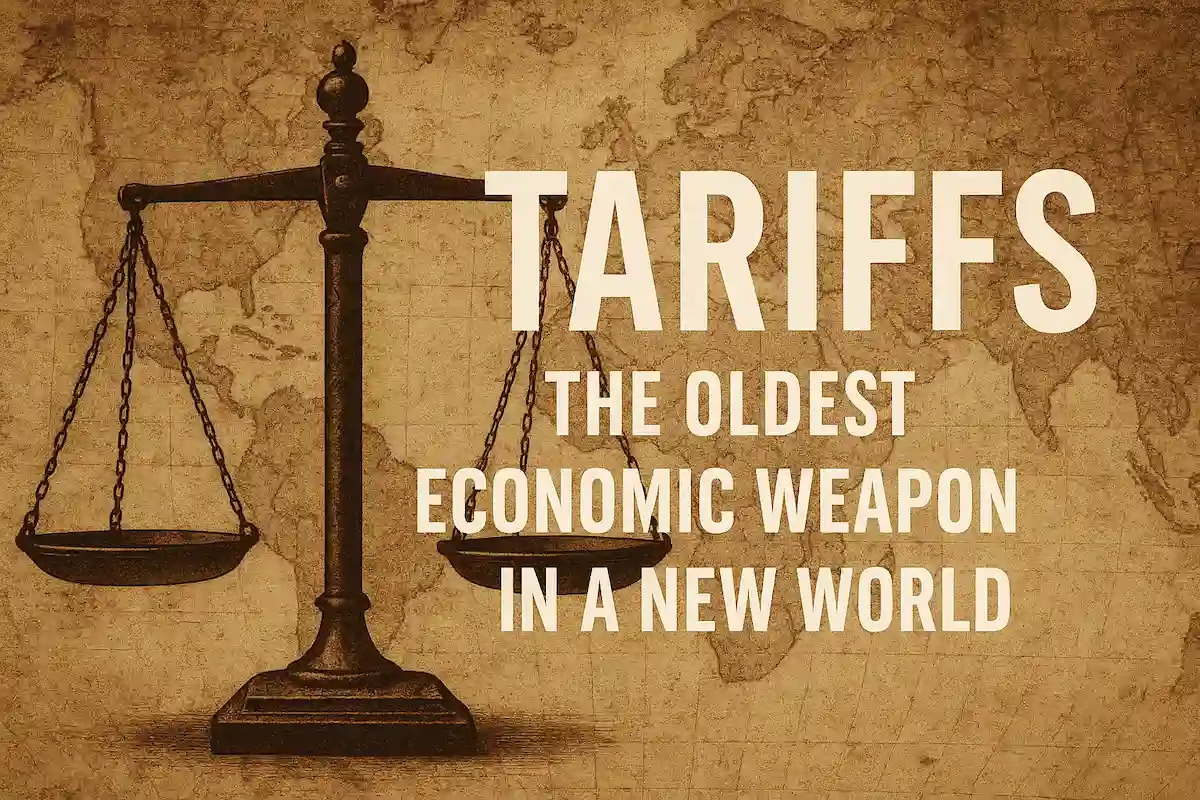Tariffs aren’t new. They’re one of humanity’s oldest tools for shaping power, wealth, and survival. Here’s how tariffs built—and broke—empires, and why they remain one of the most important forces in today’s global economy.
Tariffs might feel like a modern invention — a knee-jerk response to globalization and shifting politics — but they are ancient tools of survival and dominance.
Long before economists gave them names, leaders understood the basic truth: control the flow of goods, and you control the future.
Today, in a world of frictionless trade and digital economies, tariffs are once again being sharpened for battle. To understand what’s happening now, we have to understand the long game nations have always played.
The Ancient and Ongoing Story of Tariffs
The First Tollbooths
Thousands of years ago, city-states in Mesopotamia taxed goods that moved through their rivers and markets. It wasn’t just about making money — it was about power. Who could trade? Who could thrive? Who could be kept out?
Rome’s Mastery
The Roman Empire knew that tariffs could fund roads, armies, and expansion. Customs houses were placed at key crossings, and industries like glassmaking were fiercely protected. Trade was political, always.
The Medieval World
In medieval Europe, tariffs built kingdoms and funded wars. Trading powers like the Hanseatic League negotiated duties to protect their merchants, understanding that economic leverage could beat military might.
Mercantilism and the Race for Wealth
From the 1500s through the 1800s, mercantilist thinking dominated: a nation’s strength was measured by how much gold and silver it could hoard. Tariffs blocked imports and fueled domestic production. The Navigation Acts in England, French state policies under Colbert — these were tools of national ambition.
The Free Trade Revolutions
By the 19th century, a backlash was brewing. The British Corn Laws — heavy tariffs on imported grain — collapsed after public pressure and famine fears. Free trade, at least in theory, became the new ideal.
Tariffs and Collapse
When the U.S. passed the Smoot-Hawley Tariff Act in 1930, it set off a global wave of retaliation. Trade shrank, economies withered, and the Great Depression deepened.
Protectionism, it turned out, could be fatal if taken too far.
Now: Tariffs in a Globalized World
Today’s tariffs target China, Europe, and others. They are framed as defenses of local jobs and industries. But in an economy built on global supply chains, the ripple effects are harder to predict — and harder to contain.
Tariffs Are More Than Economics
Tariffs are weapons.
They can defend a way of life — or destroy it.
They can spark innovation — or strangle it.
Nations use them not only to raise money but to send messages, punish rivals, and redraw the map of power. Tariffs have toppled empires, built industries, and set entire nations on irreversible paths.
What we’re seeing today isn’t new. It’s history rhyming again.
For Deeper Reading
If you want to truly understand the role tariffs have played — and will continue to play — these books are essential:
📚 “The Wealth of Nations” by Adam Smith
The foundation of modern economics. Smith’s arguments against protectionism are as relevant today as they were in 1776.
📚 “Clashing Over Commerce: A History of US Trade Policy” by Douglas A. Irwin
A clear, detailed story of how America has wrestled with tariffs — and what those battles have cost.
📚 “Why Nations Fail” by Daron Acemoglu and James Robinson
A sweeping look at how political and economic institutions — including trade policies — determine whether societies rise or collapse.
Understanding tariffs isn’t about picking sides — it’s about seeing how civilizations play the long game, again and again.

Leave a Reply